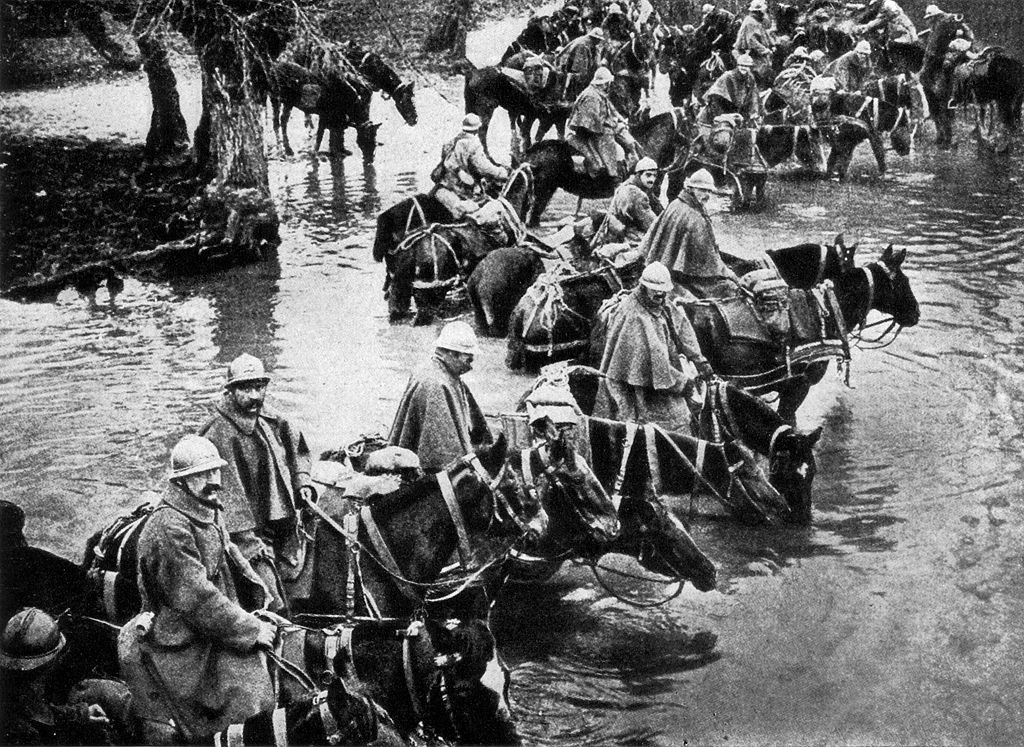Today marks the 100th anniversary of the end of the Battle of Verdun. Both sides suffered heavy casualties, and whilst it was a victory for the French, it remains one of the largest and longest battles of the First World War
To commemorate its centennial anniversary, below is an extract from ‘Campaign 93 – Verdun 1916’ by Ian Drury and William Martin, with illustrations by Howard Gerrard.
By the end of 1916 the frontline at Verdun was almost exactly where it had been at the start of Falkenhayn’s offensive. But ‘England’s best sword’ was not knocked out of her hands. Falkenhayn’s calculations were wrong – the attrition had not been in Germany’s favour by any significant degree. French losses were 61,000 dead, 101,000 missing and 216,000 wounded. German losses were 142,000 killed and missing and 187,000 wounded. No mystery attaches to the high proportion of ‘missing’. The majority of casualties were inflicted by artillery and many were unrecognisable or simply disappeared in the deluge. Bodies were buried where they fell and frequently exhumed and buried again by shellfire. A total of 48 German divisions were fed through the ‘Mill on the Meuse’ – more than half their forces on the western front. Many served there twice, for a total of 75 ‘divisional engagements’. By 1 May 1916, 40 French divisions had passed through Verdun, 66 by mid-July. By December, 75 per cent of the French army had served at Verdun: 43 divisions serving once, 23 appeared twice, and seven served there three or more times. French divisions usually spent two weeks in the line during which they lost (on average) 33 per cent of their men. At any one time there were about 24 French divisions at Verdun, Joffre jealously hoarding his troops for the Somme.

French horses resting on their way to Verdun
Source: Wikipedia
A French army study, published in 192326 revealed that the cost of defending could be higher than attacking. The 44 French divisions involved in the Somme offensive sustained 114,000 killed or missing and 205,000 wounded. During the defensive phase of Verdun, February- June, 60 French divisions served at Verdun and suffered 156,000 killed or missing plus 263,000 evacuated wounded. The French counterattacks at Verdun cost them 30,000 men, leading to the conclusion that ‘it was cheaper to conquer terrain than to lose it’.

French troops attacking under artillery fire
Source: Wikipedia
If many poilus despaired of victory by the end of 1916 and believed that it was merely a matter of time before they were killed, the same sentiment can be found in German memoirs. In Germany Verdun became synonymous with futile attrition. The official history entitles its three volumes devoted to the campaign The Tragedy of Verdun. The Verdun campaign does not represent a sudden acceleration in the downward slide of the French army – one that leads to the mutinies of 1917 and ultimately to the débâcle of 1940. The campaign ended with French attacks winning back lost ground with exceptionally light casualties by First World War standards. The French army had achieved artillery parity with the Germans and French infantry attacked not only with their usual dash, but with improved tactical competence.
If you’d like to read more about Verdun, see 'Verdun 1916' and 'The Fortifications of Verdun 1874 - 1917'.


Comments
You must be logged in to comment on this post. Click here to log in.
Submit your comment